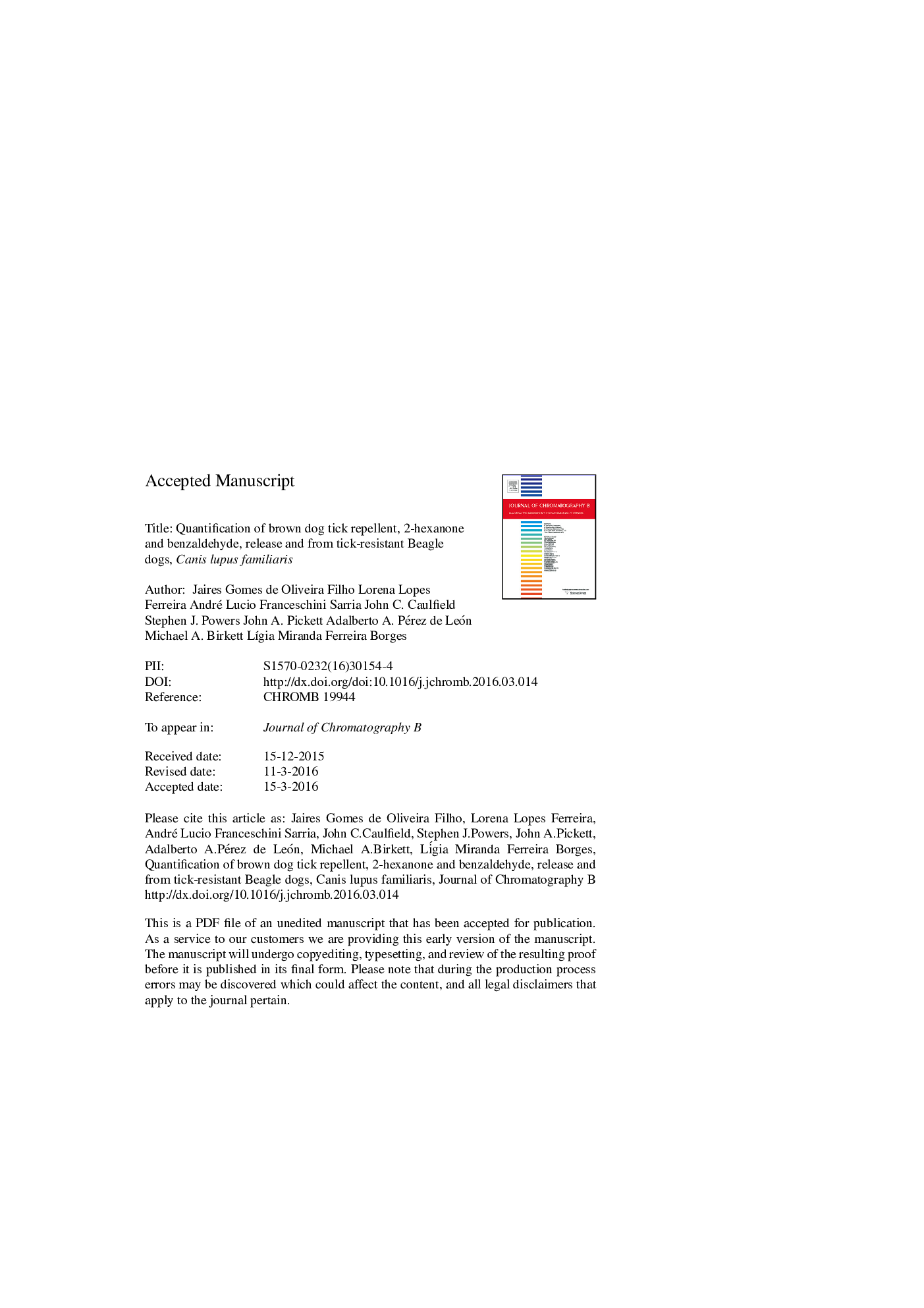| Article ID | Journal | Published Year | Pages | File Type |
|---|---|---|---|---|
| 7616128 | Journal of Chromatography B | 2016 | 24 Pages |
Abstract
We have recently shown that repellency of the tick Rhipicephalus sanguineus sensu lato by the tick resistant dog breed, the beagle, is mediated by volatile organic compounds (VOCs) 2-hexanone and benzaldehyde present in beagle odour. Ectoparasite location of animal hosts is affected by variation in these odour components and their ratios. The aim of this study was to quantify the release rate, and the ratio, of 2-hexanone and benzaldehyde from beagles. The odour of three beagles was collected, for four days, over one week (day 0, day 1, day 4 and day 7). The compounds were identified using coupled high-resolution gas chromatography-mass spectrometry (GC-MS), and authentic standards of compounds were used to generate external calibration curves for quantification. Both compounds were found in all dogs on all days. The amount of benzaldehyde was always higher than that of 2-hexanone and so their ratio varied from unity, on average (over time) being 3.128 ± 0.365, 1.902 ± 0.390, 1.670 ± 0.671 ng mLâ1 for beagle 1, 2 and 3, respectively. There was no significant (p < 0.05, F-test) effect of time. The overall mean was 2.233 ± 0.387 ng mLâ1. These results further previous findings by documenting the presence of 2-hexanone and benzaldehyde in beagle odour samples covering a 7-day period. This knowledge enables development of repellents to protect dogs from R. sanguineus s. l. infestation.
Related Topics
Physical Sciences and Engineering
Chemistry
Analytical Chemistry
Authors
Jaires Gomes de Oliveira Filho, André Lucio Franceschini Sarria, Lorena Lopes Ferreira, John C. Caulfield, Stephen J. Powers, John A. Pickett, Adalberto A. Pérez de León, Michael A. Birkett, LÃgia Miranda Ferreira Borges,
